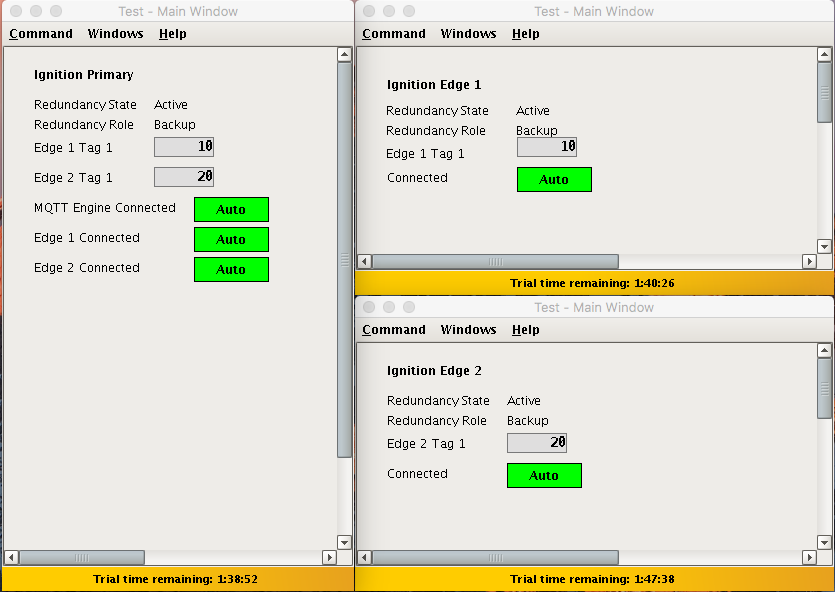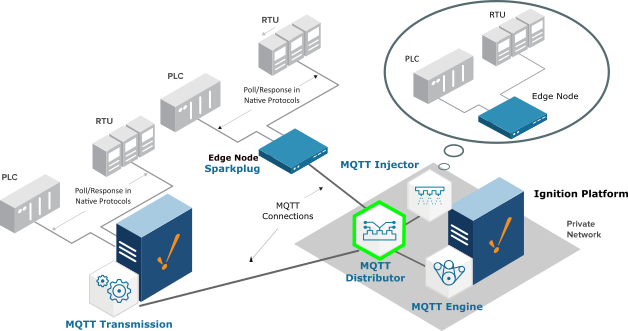Ignition Server Requirements
Connect, Design, Deploy Without Limits! Ignition is unlimited, so for the low cost of one server license you can seamlessly connect all your data, design any kind of industrial application with ease, and instantly web-deploy unlimited industrial and mobile clients to anyone, anywhere — all from one universal platform for industrial automation. Once Seeq Server is successfully running on its own machine, verify that you can log into Seeq Workbench. Register as a new user. You will need to obtain a license file, follow th. Module (EAM)⁴ is installed on the central Ignition server. Edge Enterprise comes with up to one week of data buffering so it can be used to store-and-forward your data to a central server in case of network failure. Ignition Edge Enterprise Ignition Edge Architecture: Hub-and-Spoke with Store-and-Forward.





Ignition Server Requirements
[00:00] In this lesson, we will do a review of the Ignition software and its capabilities. We will cover some of the features that make Ignition unique and the leading development platform in the world of HMI and SCADA design. Ignition is a software platform for creating custom HMI, SCADA, MES, database applications and more. The Ignition software is web-based, and it's installed and deployed using web technologies. The Ignition platform is managed, controlled and configured using a fast, easy to use web interface. Finally, Ignition developed applications and its designer tool are launched using web pages. The web based nature of Ignition makes it versatile, and safely accessible across a network. Now that we have covered the basics of what Ignition is, what can it do exactly? Using web based communication technologies, Ignition can access PLCs, OPC servers, as well as connect to SQL databases on any platform. This capability paired with Ignitions visualization tools allow users to create powerful and responsive HMI and SCADA applications to monitor control and historize information about their industrial processes. Ignition's robust Historian system allows for high-performance data logging and data visualization. With just a few clicks Ignition makes it possible to begin data logging to an ample list of SQL database flavors. The Historian also takes advantage of data compression algorithms, reducing the impact on storage hardware and data transmission time. Ignition's reporting engine, allows users to create dynamic PDF reports. Ignition reports make SQL data visualization second nature with the use of charts, tables, images, and more. If you want to print email or save daily reports, Ignition's reporting engine is the tool for the job. Ignition's ability to connect to databases coupled with its strong visualization tools, means you can build database applications with ease. You can create POS, CRM and even inventory tracking systems. Connecting to other databases in your plant floor and other database driven applications has never been easier. Ignition's state of the art alarming system can be used to send out notifications via voice SMS and email. Ignition's modular architecture allows you to mix and match all of these features in any way you want giving you the flexibility to tailor your Ignition gateway, to suit your specific needs. What makes Ignition so special? Ignition is sold by the server license and you can add unlimited number of clients, screens, tags, connections, and devices. An Ignition installation is completed in under three minutes making its deployment fast and easy. Ignition is a fully cross platform software and they can work with Windows, Mac OS and Linux servers. Ignition's core functionality and its various modules, allow it to function as a communication hub. Ignition has a built-in OPC OA server with drivers to connect to a wide variety of PLCs. Ignition can also connect to third party OPC DA and OPC UA servers, allowing you to connect to practically any PLC that exists in the market. Ignition also supports the MQTT communication protocol and can connect to an MQTT broker, for fast efficient data access. Ignition can connect to any web service, typically ERP systems. Ignition can also talk to any SQL database, whether that be My SQL Microsoft SQL Server Oracle, Postgres, DB2 and more. Ignition can also interact with other MES and ERP systems. It can also connect to a LIMs devices such as barcode scanners, scales, sensors and special laboratory equipment that companies use. Ignition projects can be launched from mobile devices or touch screen panels anywhere, and can also be launched from any PC regardless of the operating system. Ignition has four main parts. The gateway, designer, clients and sessions. The gateway is the primary service that controls your Ignition server. It is a single application that runs an embedded web server that allows you to connect to data, install modules and communicate with clients and sessions. That designer is a web launched application, that lets you configure and build Ignition projects. The designer is launched from the designer launcher, which can be obtained from the Gateway's web interface. Clients are the runtimes of the vision module. They run as full applications and feel like traditionally installed clients, without the need to install and manually synchronize your projects. Clients are launched from the vision client launcher, that can also be obtained from the gateway's webpage. Sessions are the run times of the Perspective module. They are similar to the vision clients except they run in a web browser. Sessions are launched from the gateway webpage as well. The Ignition gateway being a web server can be accessed from any web browser that is visible to the Ignition gateway over a network. Everything from your Ignition projects, tags, OPC connections, database connections, images all live in your Ignition gateway. If you want it to connect to a mod bus PLC on your plant floor, the device creation will be configured in the gateway. Similarly, if you want it to connect to an external database that connection would also be created through the gateway's web interface. As we explained earlier, Ignition is installed as server software and it is web based. So you can your Ignition gateway anywhere in your network by using any web browser. The basic flow of Ignition is to first get access to the designer through the Ignition gateways web interface. The designer is launched using the designer launcher which will be downloaded onto your machine from the gateway. With a designer launched, you can now create your very own Ignition projects. Once you configure your project, you simply save your changes in your designer and the project is sent back to your Ignition server or gateway. You can configure HMI and SCADA screens, the Historian, alarms, recipe management, reporting KPI monitoring, database applications, and more. Once the project is saved on the server, it's available to launch as a runtime application for our client. You can open it runtime application as easily as opening the designer, using the vision client launcher. Once the project is saved on the server, it's available to launch as a runtime application for our client. You can open a runtime application as easily as opening the designer using the vision client launcher for vision developed applications and the perspective session launcher for perspective developed applications. There is no limit on how many vision clients, or perspective sessions you can launch. So the basic flow here is to open the designer from the gateway, configure your project, save your changes, and open a runtime. A major benefit of Ignition being server-based, let's say you can make a change to the project and the designer, the change is automatically sent to the gateway, which then updates all of your running client applications instantaneously. You don't have to worry about restoring a backup of your projects on all of your gateway machines. Ignition is a powerful software platform for creating custom HMI, SCADA, MES, database applications and more. It's various modules give it the configurability and versatility to adapt to almost any application. Its ability to communicate with PLCs, databases, OPC servers and QTT brokers, web services, et cetera, make Ignition's data access reach almost infinite. Future courses in Inductive university, will dive deeper into Ignition, its uses and functionality.



